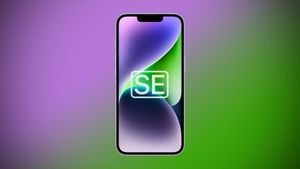Researchers have made significant strides in deciphering the complex workings of the human brain, particularly how it processes and remembers visual objects. A recent study focused on the amygdala and hippocampus, two brain regions known for their pivotal roles in emotional memory and recognition, found evidence of specialized neuronal coding techniques for visual objects.
Through the analysis of 3,173 individual neurons collected from 15 neurosurgical patients, the study revealed what is termed 'region-based feature coding.' This term refers to how certain neurons display heightened responses to specific visual stimuli based on shared features, enabling these neurons to cluster around similar types of visual inputs. This coding model not only enhances visual recognition but also predicts memory performance, bridging the gaps between perception and recollection.
According to the researchers, the ability of these neurons to respond selectively to groups of objects suggests they play an integral role in memory formation, significantly influencing how memories are encoded and retrieved over time. This pronounced activity linking perception and cognitive processes sheds light on longstanding questions surrounding how the brain organizes information and forms complex memories.
Prior to this study, the scientific community understood the amygdala and hippocampus to handle memory functions largely through exemplar-based coding, which suggests individual stimuli are encoded distinctly. This latest research challenges and expands upon those existing models by introducing the idea of regional coding, which accounts for the predictable grouping of similar visual features responsible for memory retention and recognition.
The experimental design employed by the research team utilized both passive viewing and recognition tasks involving naturalistic object stimuli from datasets, such as ImageNet and Microsoft COCO, to elicit these neural responses. During the one-back tasks, subjects viewed hundreds of object images as their neuronal responses were recorded, providing insight not only on neuronal firing rates but also on how effectively these neurons encode distinct object features.
Notably, the findings indicate significant correlations between the region-based feature coding and memory performance. Objects encoded within the neurons' tuning regions were remembered with greater accuracy compared to those located outside these defined areas. This suggests these neurons not only have specific roles within memory encoding but are also inherently linked to the memorability of visual stimuli.
The integration of advanced computational methods, including deep learning algorithms, allowed for effective extraction and analysis of the visual features relevant to the task. The study demonstrates robustness in the coding patterns, with verification from multiple datasets and experiments establishing the significance of region-based coding across various memory contexts.
This novel approach was instrumental in validating the existence of flexible and invariant coding strategies employed by these neurons, as they adaptively responded to different memory tasks. Results show how consistent activation patterns were maintained even when subjects experienced distinct stimuli types, fostering memory retention during learning and recognition phases.
Looking forward, the study not only elucidates the neural mechanisms underlying object recognition but also opens avenues for exploring potential applications in enhancing memory through targeted neural engagement. By detailing how feature-based responses correlate with memory strength, the findings pave the way for advanced neurological interventions targeting memory-related disorders.
Overall, this comprehensive analysis brings forward significant insights about the interplay between visual perception and memory within the intricacies of human cognition, with the amygdala and hippocampus at the forefront of this fascinating research frontier.



